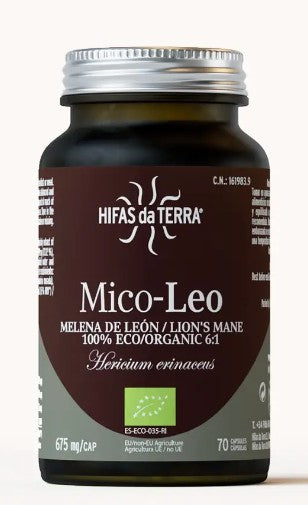Vitamin D & Autoimmune Diseases
In the UK during the winter months, the angle of the sun, shorter days and lack of bare skin exposure to the sun makes it very difficult for the skin to produce any vitamin D at all. General recommendations are now that people in the UK should be topping up their vitamin D with a maintenance dose supplement from October to April.
Vitamin D has become a hot topic of research in recent years, with a vast number of scientific studies now attesting to its importance for many different aspects of health from strong bones to immune, mood, respiratory and cognitive benefits and more.
Now a new study has found that getting enough vitamin D in early life may help to protect against islet autoimmunity (a precursor to type 1 diabetes) in children who are genetically at higher risk of developing the disease.
Published recently in Diabetes, this latest study is part of The Environmental Determinants of Diabetes in the Young (TEDDY) study – a large multinational study which began in 2004, involving 8,676 children with genetically elevated type 1 diabetes risk and which aims to identify potential triggers and protective factors for the autoimmune disease. A team of researchers from Colorado School of Public Health at CU Anschutz led by Dr Jill Norris examined the association between blood vitamin D levels and islet autoimmunity in the TEDDY children.
Type 1 diabetes is a chronic autoimmune disease, now the most common metabolic disorder in children under the age of 10, and its prevalence is increasing every year worldwide. Risks of developing the disease seem to be greater further north from the equator, where it is difficult to get enough vitamin D from sunlight exposure alone.
Dr Norris commented, “For several years there has been controversy about whether vitamin D lowers the risk of developing islet autoimmunity and type 1 diabetes.”
For this latest study, all TEDDY children underwent blood testing every 3 – 6 months from infancy to evaluate vitamin D levels and the presence of islet autoimmunity. The researchers compared 376 children who developed islet autoimmunity with 1041 children who did not. Results showed that in children who were genetically at higher risk of developing type 1 diabetes, vitamin D levels were lower in infancy and childhood in those who developed islet autoimmunity, compared to those that did not.
The researchers concluded that higher childhood vitamin D levels are significantly associated with a decreased risk of islet autoimmunity.
Is Your Job Making You Vitamin D Deficient?
The most important question any health professional can ask is ‘why?’
Digging deep to find underlying causes is the ultimate way to improve health; individually and globally.
Vitamin D deficiency has been increasing in incidence worldwide, even in countries with more sunshine. And as well as directly addressing the problem by raising awareness and promoting supplementation, it is important to ask why this is happening, so the problem can be tackled at the root cause.
A new study has aimed to do just that. In a recent systematic review, researchers investigated whether occupations, specifically shift working and indoor working, are contributors to the increased incidence of vitamin D deficiency in industrialised nations.
Overall 90 papers were found; 10 of these that met the inclusion criteria were selected (9 cross-sectional studies and 1 systematic review).
Results showed that:
• The majority of studies strongly indicate that the changing role of labour is at least contributing to the increased prevalence of vitamin D deficiency
• Indoor workers are commonly more susceptible to vitamin D deficiency than outdoor workers
• Outdoor workers are the least likely to suffer from low vitamin D
• Health care professionals (especially those where training is involved), domestic workersand executives were found to have higher than average levels of deficiency, even in climates where there is possibility of high exposure to sunlight.
• Shift workers and indoor workers are consistently reported as being the occupational group most likely to suffer from a deficiency of vitamin D
• The highest rate of vitamin D deficiency is found in those employed on night shift contracts no matter where the location.
The researchers commented,
“Certain occupations are suffering from, or have a predilection to suffer from, a deficiency of this vitamin. Shift workers and indoor workers are consistently reported as being the occupational group most likely to suffer from a deficiency of vitamin D3. It would appear prudent to investigate the potential of providing nutritional education to workers in addition to including preventative measures in the workplace.”
Vitamin D – What you can take away from this study…
Whilst this study doesn’t necessarily tell us a lot that we didn’t already know about growing vitamin D deficiency; we know that modern lifestyles are a significant contributing factor and there has been a general shift towards people spending more time indoors and less time outdoors with bare skin exposed to sunlight. It does however add an extra layer of detail to the picture, and encourages people to consider the impact of their job on their health.
The take away message is that if your job involves a lot of time spent indoors, make sure you maximise daylight exposure when you can. And if you work night shifts, and have less opportunity to get outside in daylight, there’s even more reason to be vigilant about your vitamin D. We recommend you get your blood vitamin D levels tested regularly, find bare skin exposure to sunlight where you can and take a daily supplement to keep your levels topped up. Vitamin D is best supplemented as D3 (cholecalciferol) as this is the form naturally produced in the skin in response to sunlight. Vitamin D also works in synergy with vitamin K and these are often recommended together.
Public Health England now recommends everyone should take a daily vitamin D supplement throughout autumn & winter, and babies & children up to the age of 5 and anyone at higher risk should supplement all year round.
Vitamin D Beneficial for Eczema & Psoriasis
- No longer just important for strong bones, vitamin D is known to be involved in many aspects of health
- Vitamin D is made in the skin, has multiple effects on the skin and is becoming well-known as a therapeutic option for many skin problems
- In a recent review published in Skin Pharmacology and Psychology scientists have found vitamin D to be beneficial in psoriasis and atopic dermatitis (eczema)
A new scientific review, published in the journal Skin Pharmacology and Physiology has found that vitamin D supplements may help to improve symptoms of common skin complaints such as eczema and psoriasis.
Vitamin D has long been known for its crucial role in helping calcium to build strong bones, with severe deficiency linked to the bone-softening disease rickets. More recently however, research into the importance of this fat-soluble nutrient for many other aspects of health have emerged. Vitamin D helps to regulate the immune and neuromuscular systems and plays a major role in the life cycle of human cells. Low levels of vitamin D have been associated with cardiovascular disease, cognitive impairment, depression, high blood pressure, infectious diseases, cancer risk and problems with auto-immunity such as multiple sclerosis and type 1 diabetes. And whilst our understanding of the wide-ranging bodily functions of vitamin D in the body increases, we also now know that many people (of all ages) have low levels of this essential nutrient. Vitamin D deficiency, especially in the colder winter months has become a significant public health problem.
In this latest review published in Skin Pharmacology and Physiology, scientists analysed data from recent studies on vitamin D functions in skin physiology. The skin is the site of vitamin D synthesis, yet vitamin D also affects multiple functions in the skin and is becoming known as a therapeutic option for many skin pathologies. In the review, researchers focused mainly on inflammatory skin problems such as eczema and psoriasis and overall, found vitamin D to have beneficial therapeutic effects.
The researchers concluded, “vitamin D exhibits a pleiotropic effect in the skin with its role asantiproliferative, prodifferentiative, antiapoptotic and immunomodulator. It is also intricately involved in many skin pathologies, and it positively influences the outcome of certain inflammatory dermopathologies. So far, therapeutic interventions (topical and systemic) based on vitamin D have been proved beneficial in psoriasis and atopic dermatitis (eczema).”
References:
Umar M, Sastry KS et al. Vitamin D and the pathophysiology of inflammatory skin diseases. Skin Pharmacology and Physiology. Published online https://www.karger.com/Article/FullText/485132
Thinking of Supplementing with Vitamin D? …Think Vitamin K2 Too!
With a distinct lack of sunshine, especially in the colder months, supplementation is generally accepted to be the most effective way to increase levels of vitamin D in the UK. However, as with most aspects of health, the story isn’t quite as simple as that. If you choose to supplement with vitamin D, you also need to consume in your food, or take in supplement form, vitamin K2. And here’s why.
Vitamin D & K2 May Slow Arterial Calcification
Vitamin D and Vitamin K2 work together to produce and activate Matrix GLA Protein (MGP). This is an important substance, found around the elastic fibres of your arterial lining. MGP helps to protect against the formation of calcium crystals, which can lead to arterial calcification. Current medical opinion suggests that supplementing with vitamin D and K2 together may help to slow the progression of arterial calcification, whereas vitamin D on its own may not.
Professor Cees Vermeer, one of the world’s leading K2 researchers commented on this mechanism,
“The only mechanism for arteries to protect themselves from calcification is via the vitamin-K dependent protein MGP. MGP is the most powerful inhibitor of soft tissue calcification presently known, but non-supplemented healthy adults are insufficient in vitamin K to a level that 30% of their MGP is synthesized in an inactive form.”
MK-7 – The most effective form of vitamin K2
There are several different forms of vitamin K2, one of which is MK-7, and this is generally accepted to be one of the most effective, since it has a much longer half life (3 days) than others. A longer half-life means it has a much better chance of building up a consistent blood level.







